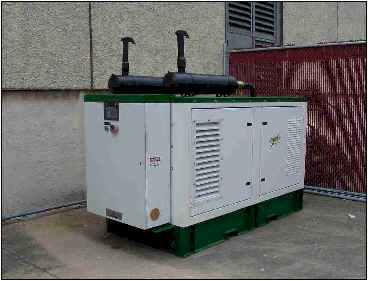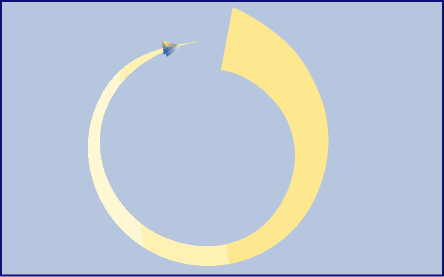


Allied Environmental Technologies, Inc. offers from a single source, all activities required for the successful implementation of your Power Generation (including Distributed Power Generation - DPG) and Energy Recovery Projects.
The Allied Environmental Technologies, Inc. approach begins and ends with active listening. Once we understand your needs and clearly define the problem, solutions emerge.
Working as a multi-disciplined team Allied's qualified engineers provide innovative solutions from idea through to completion. Whether the fuel be natural gas, landfill or synthetic gas or heavy fuel oil, we have experience with similar applications:
Project Formulation
Engineering Design
Turnkey Project Management and Construction
Power Plant Packaging
Project Development including Joint Ventures and Partnering
Remote Monitoring & SCADA systems
Commissioning and Operational Services
We enable technologies such as digital control systems and Internet functionality where we can add value to generating equipment cost effectively. We can prototype designs for manufacturers to evaluate.
To realize opportunities Allied Environmental Technologies, Inc. has developed:
National and International distribution networks.
Relationships with national/international manufacturers
Development of technology to add value to products manufactured both overseas and at home.
An association with similar, non-competitive, companies who we can represent at international trade shows where we can offer “turn-key” solutions to customers. Alternative Energy manufacturers are a good example.
A relationship with manufacturers who has developed the micro-turbine, a wonderful product that will seriously influence the Distributed Generation landscape both at home and abroad.
We have access to any type of generating equipment short of the nuclear systems. Our belief in the future of the micro-turbine has led us to focus on it almost exclusively.
At Allied Environmental Technologies, Inc. we have the ability to handle:
Fundamentals of Distributed Generation
Distributed Generation: The non-centralized production of part or all of the primary electrical power required by a facility, utilizing a generator or generators located at or near the point of usage.
Natural gas distributed generation – using gas turbines, gas engines, and fuel cells – offers clean, efficient, and cost-effective power generation solutions.
|
|
This technology places small modular power generation units close to electric power users to:
It also has a multitude of applications. |
Cogeneration: The The sequential use of a primary energy source to produce two useful forms of energy – heat and power. (American Society of Heating, Refrigerating, and Air Conditioning Engineers)
Allied Environmental Technologies, Inc. teamed up with New Millennium Power to use their Genergy Power Solutions on-site electrical power generation and cogeneration systems.
The generators and cogeneration equipment built by Genergy Power Solutions can reduce total energy costs by 30%, 40%, 50% or more!
On-Site Power Generation Genset Systems

Modular Design for 60 kW to
2,000 kW
On-Site Power Generation Systems
| Model Number | kW Rating Prime (Standby) | Generator Type | Fuel |
| GPS60(s)(i) | 66 (75) | Synchronous or Induction |
Natural Gas, CNG, LNG or Propane |
| GPS75(s)(i) | 76 (83) | Synchronous or Induction |
Natural Gas, CNG, LNG or Propane |
| GPS100(s)(i) | 105 (117) | Synchronous or Induction |
Natural Gas, CNG, LNG or Propane |
| GPS150(s)(i) | 165 (180) | Synchronous or Induction |
Natural Gas, CNG, LNG or Propane |
| GPS200(s)(i) | 220 (240) | Synchronous or Induction |
Natural Gas, CNG, LNG or Propane |
Cogeneration is a variation of distributed generation, but it is an often misused and misunderstood term. A common thought is that cogeneration means running a generator in parallel with the utility grid, or "co-generating". While this is often done, this is not the meaning of the term. Cogeneration is simply using one energy source to produce two separate forms of energy. Cogeneration is also known as combined heat and power (CHOP). In a correctly designed application, one of these forms of energy may be considered "free", since it is a by-product of the production of the primary energy form. Cogeneration is a method by which an energy user can control and reduce energy costs by utilizing the heat that would normally be wasted and use some or all of it for the thermal requirements of a facility.
Cogeneration is accomplished by utilizing the exhaust gas heat from the internal combustion engine driving the generator (which would normally be lost "up the stack"), the engine cooling jacket water, oil cooling waste heat or a combination of these. This waste heat can be utilized in a direct application for desiccation, drying or heating various materials or for space heating applications, or may be passed through heat exchangers to produce heated air, hot water or steam. This "free energy" can either be used in its initial form or may be converted to useable energy for boiler systems, chillers, air conditioning and many other applications, and will contribute significant additional savings to a facility using on-site generation.
|
Modular Design for 60
kW to 3,000 kW
|
| Model Number | kW Rating Prime (Standby) | Generator Type | Fuel |
| GPS60C(s)(i) | 66 (75) | Synchronous or Induction |
Natural Gas, CNG, LNG or Propane |
| GPS75C(s)(i) | 76 (83) | Synchronous or Induction |
Natural Gas, CNG, LNG or Propane |
| GPS100C(s)(i) | 105 (117) | Synchronous or Induction |
Natural Gas, CNG, LNG or Propane |
| GPS150C(s)(i) | 165 (180) | Synchronous or Induction |
Natural Gas, CNG, LNG or Propane |
| GPS200C(s)(i) | 220 (240) | Synchronous or Induction |
Natural Gas, CNG, LNG or Propane |
 |
Gas Turbines for Distributed Generation |
| Gas turbines (or combustion turbines) are available in a range of sizes. Gas turbines are used mainly above 1 MW, though smaller units – microturbines – are produced in sizes less than 200 kW. Gas turbines can operate in different cycle configurations, including: |

Gas turbines can be either a single-shaft machine (with compressor and power turbine on the same shaft) or a split-shaft machine as shown above. The simple-cycle gas turbine includes an air compression section, a burner or combustor (most of which are based on dry low NOx combustor principles), and a power turbine driving a load such as an electric generator.

A recuperated turbine is similar to a simple-cycle gas turbine, except for the inclusion of a special heat exchanger – called a recuperator – that captures exhaust thermal energy to preheat compressed air before the burner. Capturing exhaust energy helps increase electrical efficiency compared to a simple-cycle gas turbine.

These turbines build on the concept of heat recovery by capturing exhaust energy in a device called a heat recovery steam generator (HRSG). The HRSG may also include a burner to increase the steam output. Steam from the HRSG drives a steam turbine – generating power in addition to the main power turbine. Combined-cycle gas turbine power plants significantly increase power generation output and efficiency compared to a simple-cycle design.
With heat recovery, total efficiency can be high for all cycles. Electrical efficiency increases for recuperated and combined cycle configurations and generally improves as turbine size increases.
Gas turbines can be classified into four different categories:
This table shows selected gas
turbine manufacturers.
| Heavy Duty | Aeroderivative | Industrial | Microturbine |
| ABB | GE | ABB Alstom | Allied Signal |
| GE | Pratt & Whitney | Solar Turbines | Capstone |
| Siemens-Westinghouse | Rolls Royce-Allison | Elliott | |
| NREC |
Most DG turbine applications (below 25 MW) use smaller aeroderivative, industrial, or microturbine machines in a simple cycle or recuperated cycle. Microturbine products are being introduced during 1999-2001. Larger "merchant" natural gas power plants (above 25 MW) use heavy duty and larger aeroderivative machines in either a simple or combined-cycle operating mode.
Microturbines...Where Smaller Can Be Better
One of the axioms of the Industrial Age was growth in the size of machinery. Small millstream-powered machinery gave way to larger -- even massive -- and more powerful machines.
Not surprisingly, one of the axioms of the Information Age is a sharp reversal of that trend. Even while machines of all types are becoming more powerful and useful, they are becoming smaller and smaller.
Today's telephones, calculators and computers are a lot smaller and more powerful than their predecessors of 50 years ago. Today, even some electricity generators have followed the trend to smaller and more useful.
Called microturbines, they are small, high-speed generator power plants that include the turbine, compressor, generator, all of which are on a single shaft as well as the power electronics to deliver the power to the grid. Microturbines have only one moving part, use air bearings and need no lubricating oil.
These small power plants could operate on natural gas, diesel, gasoline or other similar high-energy, fossil fuel.
There are several microturbine systems manufactured in the USA. Among them:
The Capstone MicroTurbine™ System
|
|
It's about the size of a
refrigerator and generates 30 kilowatts of electricity - enough to power a
small business.
The Capstone MicroTurbine is based on the same technology as a jet engine - but integrates patented air bearing and proprietary software with state-of-the-art electronics. The result: a versatile, reliable, environmentally beneficial solution for power generation that is virtually maintenance-free. |

Contact us: